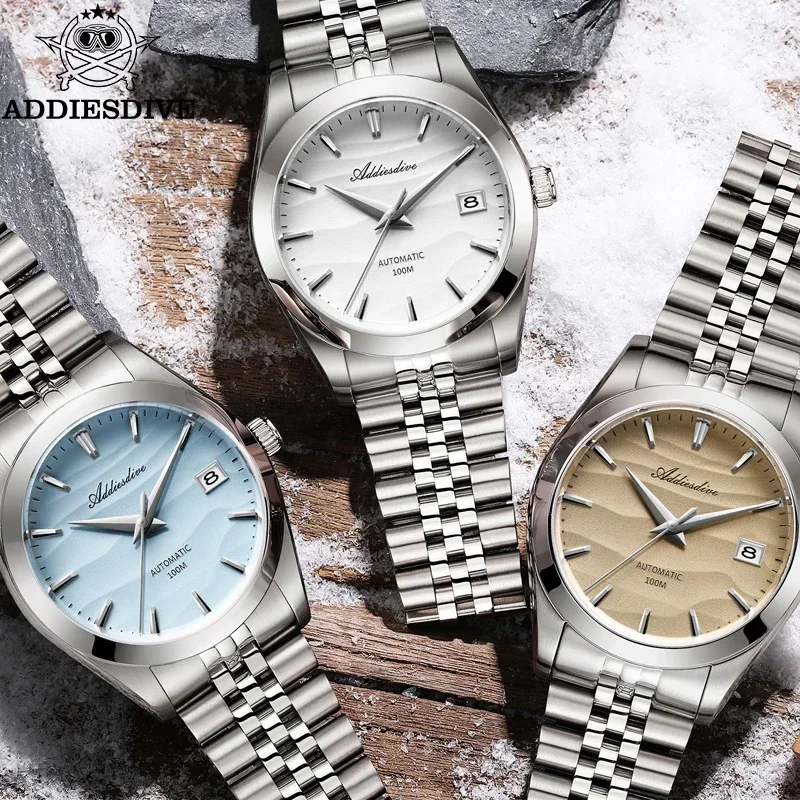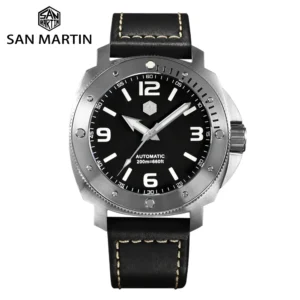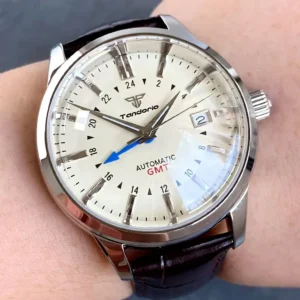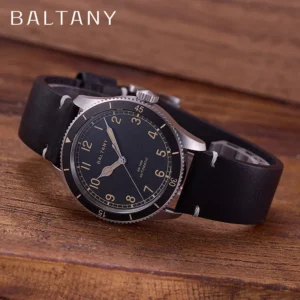Introduction: The Battlefield Origins of Wrist-Worn Timekeeping
Military field watches represent a perfect union of purpose and design. These timepieces are defined by three essential qualities: exceptional durability to withstand harsh conditions, outstanding legibility for split-second readability, and unfailing reliability when lives depend on it. What began as a practical solution to battlefield challenges has evolved into an enduring symbol of rugged functionality and timeless design.
The history of wristwatch adoption is inextricably linked to warfare. Before military necessity intervened, men primarily carried pocket watches, considering wristwatches to be feminine accessories. However, the demands of modern combat—where synchronization of movements and split-second timing could determine success or failure—drove rapid innovation in wristwatch design and functionality.
The complete history of field watches in military service reveals how warfare transformed timekeeping from a personal convenience into a critical military tool. Early models featured wire lugs, luminous dials, and protective covers—all innovations born from battlefield requirements rather than fashion concerns.
This article traces the remarkable journey of military field watches from their humble beginnings as modified pocket watches to their current status as icons of functional design. We’ll explore how each major conflict brought new challenges and innovations, ultimately creating a category of timepieces that continues to influence automatic field and military watches today. Their evolution reflects not just changes in technology but shifts in how we understand the relationship between form and function.
From Pocket to Wrist: Early Timekeeping in Combat (Pre-WWI)
Before wristwatches gained military acceptance, officers and soldiers relied on pocket watches—an increasingly impractical solution as warfare modernized. Pocket watches required a free hand to operate, disrupting crucial activities like handling weapons or equipment. They were also vulnerable to the elements, with their exposed mechanisms easily damaged by moisture, dust, and impact.
Early adaptations emerged to address these limitations. “Wristlets” or “officers’ watches” were essentially pocket watches modified with wire lugs soldered to the case, allowing attachment to leather straps worn around the wrist. These transitional designs maintained the pocket watch’s large, readable dial while providing hands-free operation crucial in combat.
Military adoption began gradually. The German Imperial Navy commissioned some of the earliest purpose-built wristwatches from Girard-Perregaux around 1879, recognizing their utility for naval operations. During the Boer War (1899-1902), British officers began strapping pocket watches to their wrists, finding that this improvisation provided critical advantages during combat.
These early adaptations featured several noteworthy characteristics:
– Protective metal grilles (often called “shrapnel guards”) to shield the crystal
– Extended leather straps designed to fit over bulky uniform sleeves
– Luminous paint on the hands and hour markers for nighttime readability
– Reinforced attachment points to prevent the watch from being torn off
The evolution from trench to field watches began with these pragmatic modifications. While still not purpose-built for combat, these adaptations laid important groundwork for the true military wristwatches that would emerge during the approaching global conflict. They represented the first step away from the gentleman’s pocket watch toward the rugged, practical field watch that would soon become essential military equipment.
World War I: The Birth of the Modern Military Watch (1914-1918)
The First World War transformed wristwatches from novelties into necessities. Trench warfare, with its emphasis on coordinated artillery bombardments and precisely timed infantry advances, demanded reliable timekeeping under the worst possible conditions. Officers needed watches that could withstand mud, water, extreme temperatures, and constant shocks while remaining perfectly legible in all light conditions.
Key Innovations of WWI Military Watches
- Luminous Dials: Radium-based luminous paint allowed for reading time in nighttime trenches and during night operations
- Oversized Numerals: Large, bold Arabic numerals improved rapid readability during high-stress situations
- Wire Lugs: Sturdy fixed lugs replaced fragile hinged attachments for improved durability
- Crystal Protectors: Metal “shrapnel guards” shielded glass from impact and battlefield debris
- Dust and Moisture Resistance: Improved case designs with better gaskets reduced contamination
- Hack Feature: Some models developed the ability to stop the second hand for precise synchronization
The military watch became indispensable as warfare grew increasingly mechanized and coordinated. Artillery barrages, infantry advances, and relief rotations all required precise timing. A failed watch could mean missed signals, botched operations, or worse. Watches transitioned from personal accessories to essential military tools, with governments contracting manufacturers to produce timepieces to exacting specifications.
Companies like Omega, Longines, and Waltham produced significant quantities of “trench watches” designed specifically for officers. These watches featured black dials with white numerals and hands for maximum contrast, luminous markings, and sturdy cases that could withstand the rigors of front-line service.
The distinct military watch styles across decades began taking shape during this period. These designs established foundational elements that would influence military timepieces for the next century. The war transformed wristwatches from a niche product to a mainstream necessity, with returning soldiers continuing to wear them in civilian life.
The battlefield-born innovations of WWI laid the groundwork for all future military timepieces and heavily influenced the classic field watches we still admire today. What began as a practical solution to warfare’s timing challenges emerged as the template for the modern wristwatch.
Between the Wars: Refinement and Civilian Adoption (1919-1938)
The interwar period witnessed a critical transformation in wristwatch design and public perception. As millions of veterans returned home still wearing their wristwatches, the idea that these were feminine accessories quickly disappeared. Men who had relied on wristwatches in the trenches continued using them in civilian life, driving wider market acceptance.
This era saw significant technological refinements that built upon wartime innovations:
Water Resistance Improvements: The 1926 introduction of the Rolex Oyster case represented a major breakthrough in water protection. Its screw-down crown and case back created a nearly hermetic seal, protecting the movement from moisture—a feature that would prove invaluable in future military applications.
Shock Protection Systems: New mechanisms like Incabloc (1934) protected delicate balance staffs from breaking during impacts, dramatically improving watch durability in active environments.
Anti-Magnetic Protection: Innovations in shielding watch movements from magnetic fields—a growing concern as electrification spread—became increasingly important for precision timekeeping.
Case Material Advancements: Manufacturers began experimenting with stainless steel and other corrosion-resistant alloys, moving away from the brass and nickel cases common during WWI.
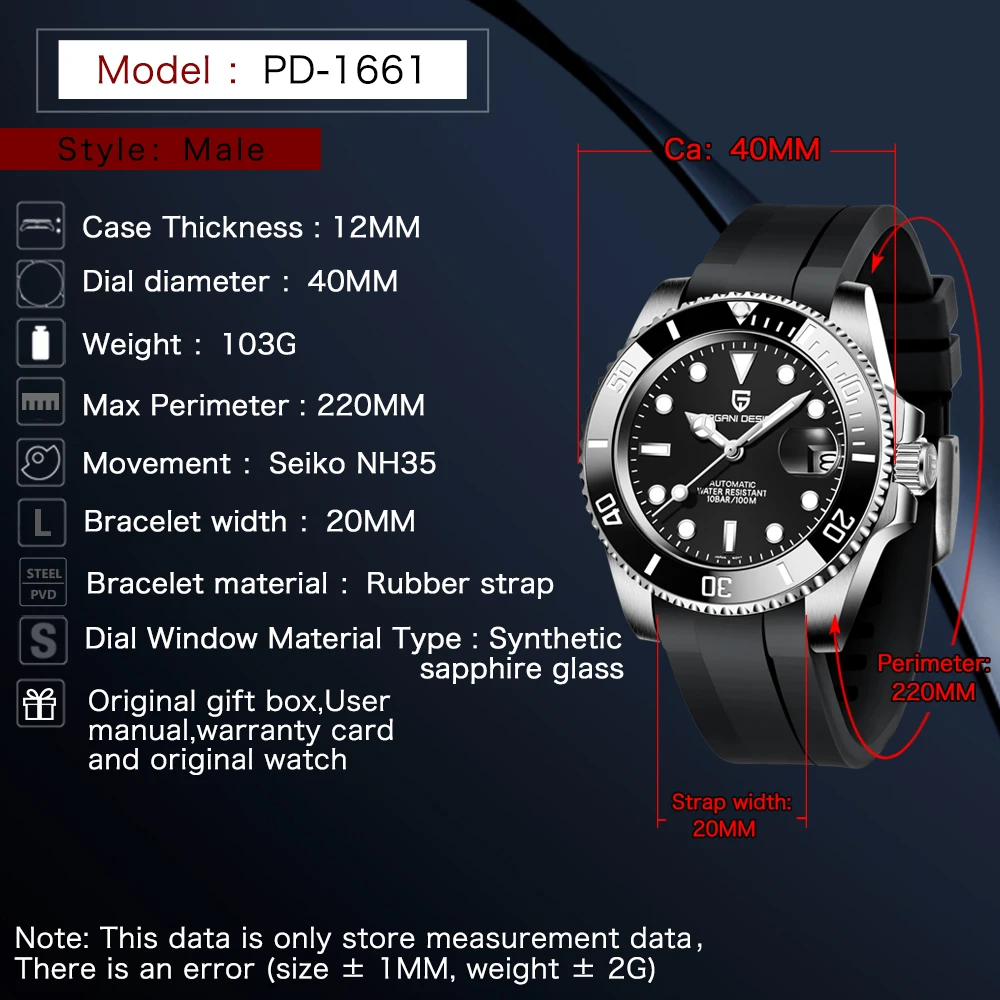
Watch companies refined field watch designs based on real-world combat experience, creating more robust and practical timepieces. The comprehensive history of field watch development during this period shows how lessons learned in the trenches informed significant design improvements during peacetime.
The interwar years also saw increasing specialization in watch design. Aviation pioneers required dedicated instruments for navigation, leading to the development of specialized pilot’s watches with features like oversized crowns (for operation while wearing gloves) and high-contrast dials with anti-reflective treatments.
By the late 1930s, wristwatches had evolved from modified pocket watches into purpose-built instruments with their own design language and technical solutions. These advancements would prove crucial as the world once again prepared for global conflict, setting the stage for the next leap forward in military timekeeping.
World War II: Standardization and Iconic Designs (1939-1945)
World War II prompted unprecedented standardization and production of military timepieces. As warfare became increasingly mechanized and coordinated, reliable timekeeping wasn’t just helpful—it was essential. Major military powers developed exacting specifications for wristwatches, leading to some of the most iconic and influential designs in horological history.
The American A-11 Specification
The U.S. military’s A-11 specification became one of the most significant developments in military watch history. These watches featured:
- Black dials with white markings for maximum legibility
- Central seconds hand for precise timing
- “Hack” feature allowing the second hand to be stopped for synchronization
- Luminous hands and hour markers for nighttime visibility
- Strict accuracy requirements of +/- 30 seconds per day
- Robust construction for battlefield durability
Manufacturers including Elgin, Waltham, and Bulova produced millions of these watches, which served across all theaters of war. The A-11 established a design language that would influence military and civilian watches for decades.
The British “Dirty Dozen” W.W.W. Watches
Britain’s War Department commissioned twelve Swiss manufacturers to produce watches to identical specifications, creating what collectors now call the “Dirty Dozen.” These Wrist Watch Waterproof (W.W.W.) timepieces featured:
- 35-38mm cases with fixed lugs
- Black dials with luminous Arabic numerals
- Luminous hands including a central seconds hand
- Waterproof cases with screw-down or snap-on backs
- High-grade manually-wound movements
- Broad arrow marking indicating government property
The evolution of army-issued timepieces during this period demonstrates how military requirements drove rapid standardization across different manufacturers.
German Fliegers and B-Uhren
German air force navigators relied on the distinctive B-Uhr (observation watch) design:
- Oversized cases (typically 55mm) for maximum legibility
- Extra-long straps to fit over flight jackets
- Highly legible black dials with white markings
- Hacking seconds for precise synchronization
- Anti-magnetic protection for accurate navigation
- Central seconds hand for precise timing
These designs continue to influence modern military-inspired automatic watches with their distinctive aesthetic and functional elements.
WWII-era watches represented a significant evolutionary leap from their WWI predecessors. Material shortages drove innovation, with manufacturers developing more efficient production techniques while maintaining critical quality standards. These watches weren’t just accessories—they were precision instruments whose reliable operation could mean the difference between success and failure in combat operations.
Specialized Military Timepieces: The Post-War Era (1950s-1970s)
The Cold War era witnessed unprecedented specialization in military timepieces. As warfare evolved across different environments and mission profiles, so did the watches designed to support these operations. This period saw distinct categories of military watches emerge, each with specific features tailored to their operational environments.
Dive Watches: Conquering the Ocean Depths
Naval special operations forces required timepieces that could function at significant depths while maintaining perfect legibility. Key developments included:
- Dramatically improved water resistance (from 100m to 300m+)
- Unidirectional rotating bezels for tracking immersion time
- Highly luminous dials and hands visible in murky waters
- Secure bracelet attachments to prevent loss during operations
- Helium escape valves for saturation diving operations
The Rolex Submariner, adopted by the British Royal Navy, and the Blancpain Fifty Fathoms, used by French combat swimmers, exemplified this category. These watches established design principles that continue to influence modern automatic dive watches.
Pilot’s Watches: Meeting Jet Age Requirements
As aviation entered the jet age, pilots required watches that could withstand extreme conditions:
- Resistance to rapid pressure changes at high altitudes
- Anti-magnetic properties to function near electronic equipment
- Chronograph functions for navigation and fuel calculations
- High legibility under varying light conditions
- Multiple time zone tracking capabilities
Models like the IWC Mark XI (British RAF) and various chronographs designed for air forces worldwide incorporated these features, balancing traditional reliability with new capabilities required for supersonic flight.
Field Watches: Modern Infantry Timekeeping
Ground forces continued to rely on robust field watches with enhanced features:
- Improved shock resistance for combat conditions
- Automatic movements eliminating the need for daily winding
- Enhanced water and dust protection
- Tritium luminescence replacing radium for safer operation
- Standardized NATO strap attachments for security
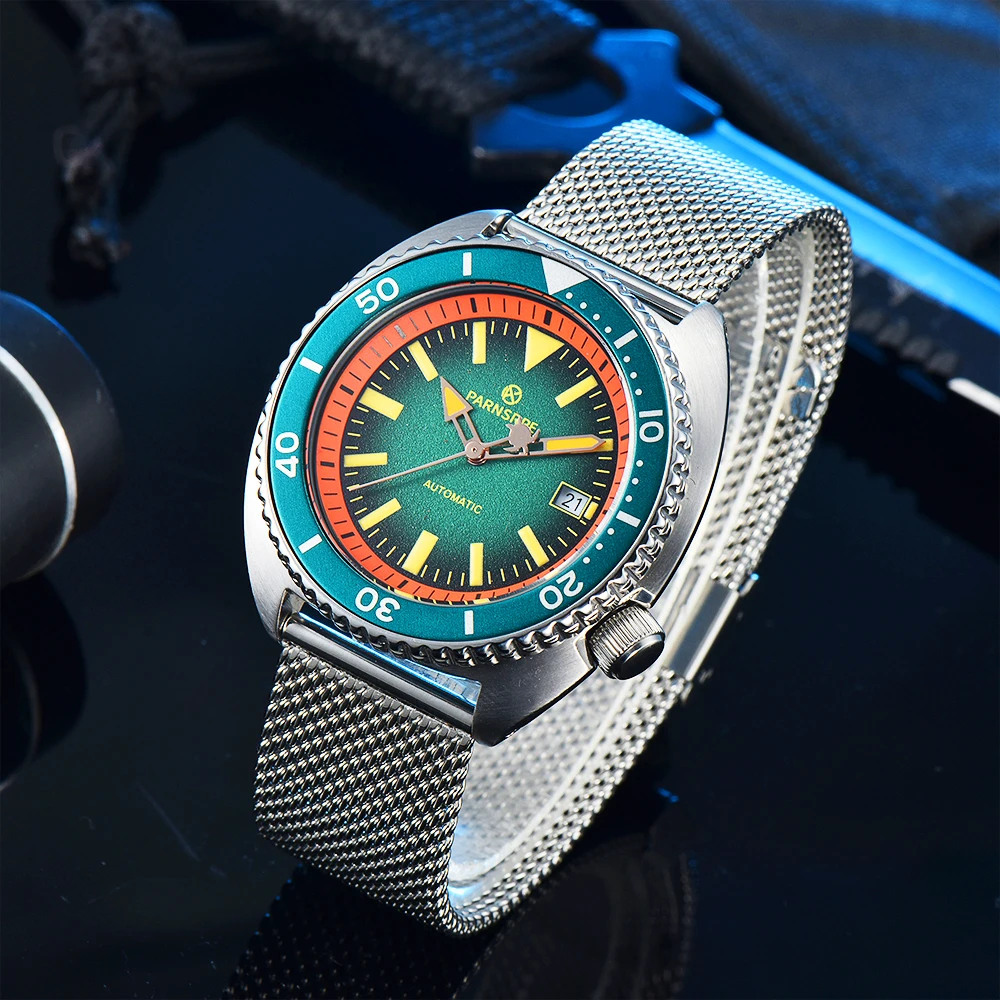
American specifications like MIL-W-3818B and MIL-W-46374 governed these watches, ensuring consistent performance across different manufacturers. The field watch functionality in combat zones evolved significantly during this period, reflecting the changing nature of warfare.
This era also saw the widespread adoption of automatic movements in military watches, eliminating the daily winding requirement that could be problematic in combat situations. Improved materials and manufacturing techniques resulted in watches that could withstand more extreme conditions than their predecessors while maintaining accurate timekeeping.
The specialized timepieces developed during this period established design languages and technical solutions that continue to influence modern military and civilian watches alike. Their purpose-driven designs proved that form following function could create not just effective tools, but enduringly attractive timepieces.
The Quartz Revolution: Precision and Digital Transformation (1970s-1990s)
The introduction of quartz crystal technology in the late 1960s and its subsequent refinement in the 1970s fundamentally transformed military timekeeping. Traditional mechanical watches, even the finest examples, typically achieved accuracy within 2-10 seconds per day. Quartz watches immediately surpassed this, delivering accuracy measured in seconds per month—a revolutionary improvement for military operations where precise synchronization was critical.
Transformative Advantages of Quartz Technology
- Unprecedented Accuracy: Quartz oscillators provided accuracy within seconds per month rather than per day
- Enhanced Reliability: Fewer moving parts meant fewer potential failure points
- Greater Shock Resistance: Simpler mechanisms better withstood impacts and vibrations
- Extended Service Intervals: Less maintenance required in field conditions
- Lower Production Costs: More affordable manufacturing enabled wider distribution
Military forces quickly recognized these advantages. The U.S. military developed new specifications (MIL-PRF-46374G) specifically for quartz watches, while other nations similarly embraced the technology for its operational benefits.
Digital Display Revolution
The mid-1970s saw the introduction of digital display watches, further transforming military timekeeping:
- LED and later LCD displays provided instant, precise time readings
- Multiple functions (chronograph, alarm, timer) in a single device
- Backlight technology for reading in complete darkness
- Additional computational capabilities (calculations, conversions)
- Advanced timing features for specialized operations
These advantages came with new considerations—battery life became a critical factor, especially in extended field operations where replacement batteries might be unavailable.
The Rise of the G-Shock Standard
Casio’s introduction of the G-Shock in 1983 represented a watershed moment in military watch evolution. Its innovative design featuring:
- Extreme shock resistance (surviving drops from 10+ meters)
- 200-meter water resistance as standard
- Long battery life measured in years rather than months
- Multiple time zones and functions in one durable package
- Affordable price point allowing wide distribution
The G-Shock quickly became standard issue for many military units worldwide, establishing a new paradigm for rugged electronic timepieces. The timeline of tactical field watch innovation shows how this revolutionary design shifted expectations for military timepieces.
The quartz revolution didn’t completely displace mechanical watches in military service—many forces maintained traditional mechanical watches for their independence from batteries and electromagnetic pulse (EMP) resistance. However, this technological shift dramatically expanded the capabilities available to service members while establishing new standards for accuracy and functionality in military timekeeping.
Modern Battlefield Timekeeping: Advanced Materials and Smart Technology (1990s-Present)
Contemporary military timepieces represent the culmination of over a century of battlefield-driven innovation. Modern materials science, electronic systems, and manufacturing techniques have created watches that significantly outperform their historical counterparts while maintaining the core principles of military design.
Material Science Innovations
Today’s military watches utilize advanced materials that dramatically enhance durability and performance:
- Titanium Construction: Providing strength comparable to steel at roughly half the weight, titanium offers exceptional corrosion resistance ideal for maritime operations
- Carbon Composites: Ultra-lightweight, incredibly strong, and non-reflective for tactical applications
- Ceramic Components: Nearly scratch-proof bezels and case elements resist abrasion in harsh environments
- PVD and DLC Coatings: These surface treatments enhance durability while reducing reflectivity—a crucial tactical consideration
- Sapphire Crystals: Virtually unscratchable compared to traditional mineral glass, with anti-reflective coatings for enhanced legibility
Evolution of Luminous Technology
Nighttime visibility has evolved dramatically from the dangerous radium of early field watches:
- Photoluminescent Compounds: Super-LumiNova and similar materials provide bright, long-lasting illumination without radiation risks
- Tritium Gas Tubes: Self-powered illumination lasting decades without requiring “charging” from external light sources
- Electroluminescent Backlighting: Electronically-activated illumination systems offering consistent, controllable brightness
- LED Illumination: Direct lighting systems providing high-intensity illumination on demand
Tactical Smartwatches and Connected Capabilities
The integration of digital technology has created entirely new categories of military timepieces:
- GPS Navigation: Real-time position tracking and navigation capabilities
- Altimeters and Barometers: Environmental data collection for mission planning
- Heart Rate Monitoring: Operator status tracking during high-stress operations
- Bluetooth Connectivity: Secure communication with other devices
- Solar Power: Extended field operations without battery concerns
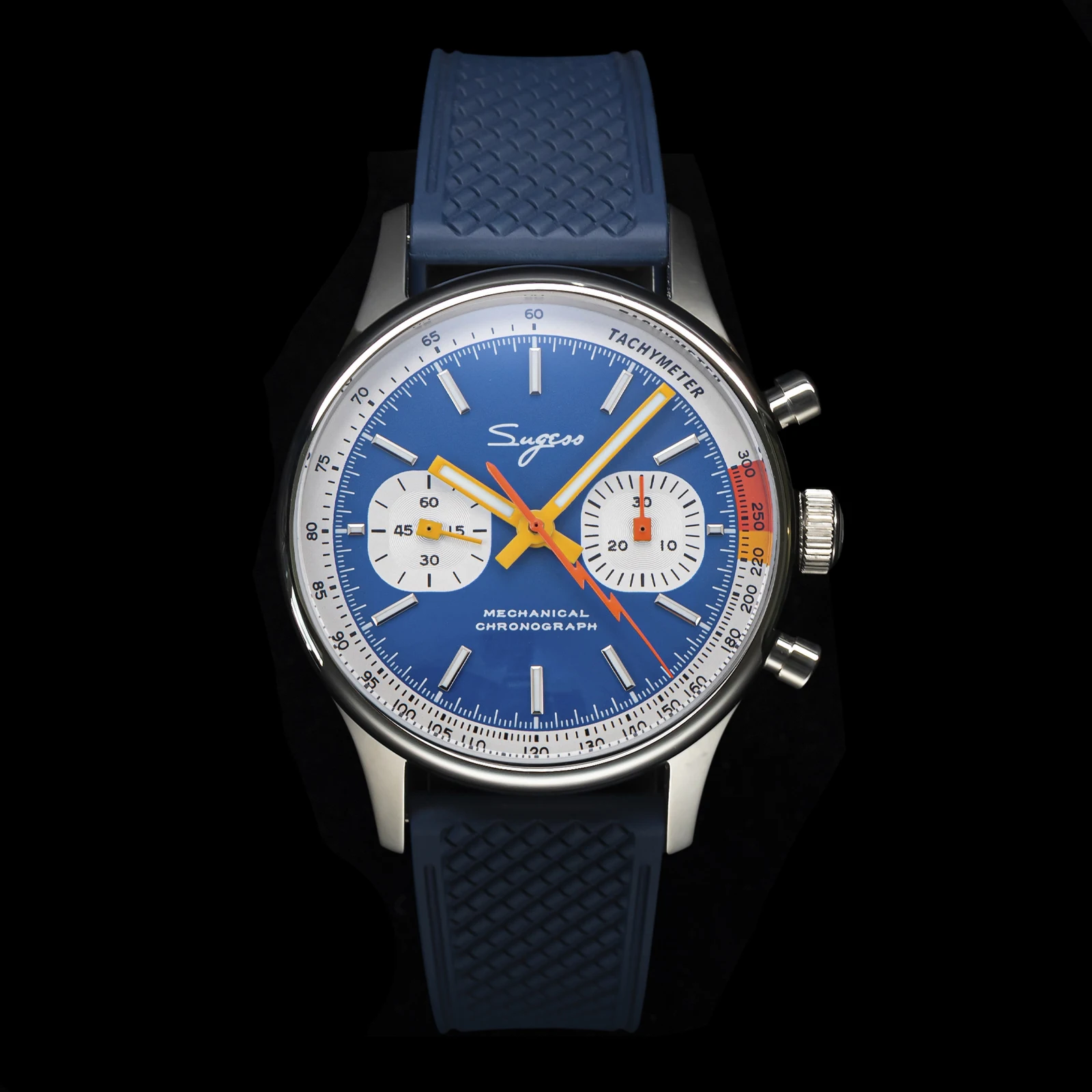
Despite these technological advances, many military units continue to issue traditional analog field watches alongside advanced digital systems. This reflects the tactical automatic watches philosophy of redundancy—electronic systems offer unprecedented capabilities but remain vulnerable to battery depletion, electromagnetic interference, and other failure modes that don’t affect mechanical timepieces.
The modern military watch landscape embraces both cutting-edge technology and traditional designs. Titanium automatic watches provide the perfect balance of lightweight durability and battery independence, while advanced electronic systems offer capabilities unimaginable to previous generations of soldiers. This dual approach ensures that regardless of environment or mission, reliable timekeeping remains available to military personnel worldwide.
The Enduring Design Philosophy of Military Field Watches
Despite a century of technological evolution, the fundamental design philosophy of military field watches has remained remarkably consistent. These timepieces represent one of the purest expressions of form following function, with every design element serving a specific purpose rather than merely aesthetic considerations.
Core Design Principles
Uncompromised Legibility: High-contrast dials, distinctive hand shapes, and clean layouts enable instant time-reading under stress. The traditional black dial with white markings maximizes readability in varied lighting conditions.
Exceptional Durability: Military watches are engineered to withstand environments that would destroy ordinary timepieces. Reinforced cases, shock-absorbing systems, and robust crystals protect the movement from the inevitable impacts of field operations.
Steadfast Reliability: A military watch must function perfectly when needed. This principle drives redundant systems, simplified mechanisms, and thorough testing under extreme conditions.
Purpose-Driven Functionality: Every feature must serve a practical purpose. Superfluous elements are eliminated, resulting in the characteristic clean, minimal aesthetic of authentic field watches.
Utilitarian Simplicity: Complex operations require simple tools. Military watches prioritize straightforward operation under stress, avoiding complicated functions that might fail when needed most.
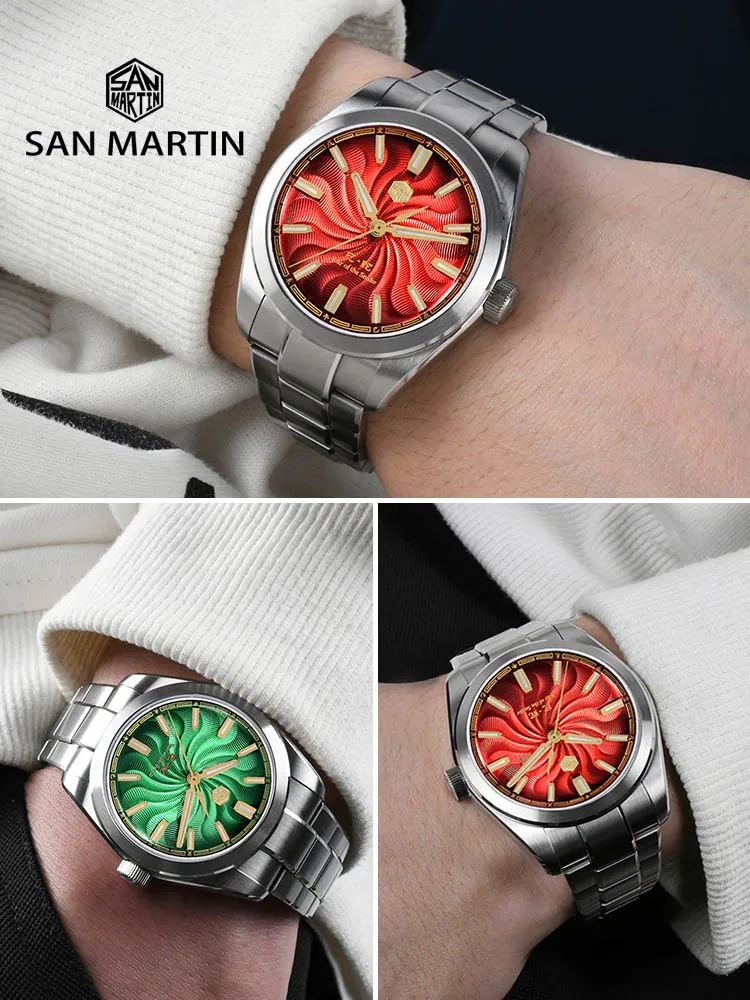
These principles transcend specific technologies. Whether examining a WWI trench watch, a WWII field watch, or a modern tactical timepiece, these same design elements remain constant. Military specifications have consistently emphasized these qualities, with documents like the American MIL-W-3818 or British DEF-STAN 66-4 codifying these requirements for manufacturers.
What’s particularly remarkable is how these functional requirements have created a distinctive aesthetic that remains immediately recognizable and appealing. The military necessity that forged modern field watches resulted not just in effective tools but in an enduring design language.
The hallmark triangle at 12 o’clock for rapid orientation, the high-contrast Arabic numerals, the minimalist dial free of unnecessary decoration—these elements weren’t chosen for their visual appeal but for their functional contribution. Yet collectively, they create a cohesive design that communicates reliability, functionality, and purposeful engineering.
This unwavering commitment to function-first design explains why military watch aesthetics remain relevant and appealing decades after their introduction. Their beauty emerges not from arbitrary styling but from the perfect alignment of form and purpose—a design philosophy that transcends fashion trends.
From Battlefield to Fashion Statement: Military Watch Influence on Civilian Timepieces
The migration of military watch design into civilian fashion represents one of the most successful examples of functional design crossing into mainstream culture. Features originally developed for battlefield necessity now define entire categories of civilian watches, with military heritage becoming a selling point rather than simply an origin story.
Military-driven innovations that have become standard in everyday watches include:
- Water resistance ratings now common even in dress watches
- Luminous hands and markers for nighttime visibility
- Sapphire crystals for scratch resistance
- Screw-down crowns for improved water protection
- NATO strap options for security and comfort
The aesthetic influence is equally profound. The clean, legible dial designs pioneered for military use have become design touchstones for countless watch brands. The field watch, dive watch, and pilot’s watch—all military in origin—now represent three of the most popular and enduring watch categories in civilian markets.
This crossover success stems from the values these designs communicate. Military watches symbolize reliability, functionality, and purposeful engineering—qualities many consumers seek in their own timepieces. The rugged watch cases for outdoor adventures that evolved from military requirements now appeal to civilians seeking timepieces that can withstand active lifestyles.
Heritage collections from major watchmakers explicitly celebrate this military lineage. Companies frequently reissue historic military designs or create modern interpretations that maintain key visual elements while incorporating contemporary technology. The “tool watch” aesthetic—defined by its emphasis on functionality over ornamentation—has become a distinct and enduring watch category directly descended from military designs.
Military Inspired Automatic Watches, Rugged Automatic Watches, Tactical Automatic Watches
Price range: $852.14 through $994.60 Select options This product has multiple variants. The options may be chosen on the product pageAutomatic Chronograph Watches, Classic Style Dive Watches
$3,053.06 Select options This product has multiple variants. The options may be chosen on the product pageBronze Automatic Watches, Military Inspired Automatic Watches, Professional Spec Dive Watches
Price range: $1,442.21 through $1,442.82 Select options This product has multiple variants. The options may be chosen on the product pageProfessional Spec Dive Watches, Titanium Automatic Watches
$574.74 Select options This product has multiple variants. The options may be chosen on the product pageClassic Automatic Dress Watches, GMT Automatic Watches, GMT Dive Watches
Price range: $468.93 through $552.94 Select options This product has multiple variants. The options may be chosen on the product pageClassic Pilot Watches, Military Inspired Automatic Watches
$561.00 Select options This product has multiple variants. The options may be chosen on the product page
What began as pure utilitarian design has transcended its practical origins to become a statement about values and identity. Wearing a military-inspired watch connects the wearer to a tradition of reliability, durability, and purpose-driven design—qualities that remain as appealing in civilian life as they were essential on the battlefield.
The Future of Military Timekeeping: Advanced Integration and Classic Resilience
The evolution of military timekeeping continues to follow two parallel paths: embracing cutting-edge technology while maintaining the proven reliability of traditional designs. This dual approach reflects the military principle of redundancy—having multiple solutions to ensure mission success regardless of circumstances.
Emerging Technologies in Military Timekeeping
- Integrated Battle Systems: Watches becoming nodes in networked battlefield information systems
- Advanced Power Solutions: Kinetic, solar, and thermal energy harvesting for extended field use
- Biometric Monitoring: Tracking soldier physiological data to prevent fatigue and optimize performance
- Adaptive Materials: “Smart” materials that respond to environmental conditions
- Enhanced Display Technologies: Heads-up projection and augmented reality integration
Military research continues to push boundaries in wearable technology, with timepieces serving as natural platforms for innovation. These developments will likely produce capabilities that eventually filter into civilian watches, continuing the historical pattern of military-driven innovation benefiting consumer products.
Despite these technological advances, traditional mechanical and simple quartz watches maintain significant advantages in certain scenarios. They offer:
- Electromagnetic Pulse (EMP) Resistance: Mechanical watches remain functional after events that disable electronic devices
- Extended Operation Without Power: Automatic watches function indefinitely without batteries or charging
- Simplicity and Reliability: Fewer components mean fewer potential points of failure
- Universal Functionality: Operation in extreme environments where electronics might fail
The tactical elements in automatic watches continue to evolve alongside digital solutions, ensuring that military forces maintain timekeeping capabilities across all operational scenarios. This balanced approach—embracing innovation while preserving proven solutions—reflects the pragmatic philosophy that has always guided military equipment development.
The future military watch will likely be a hybrid solution, combining the best aspects of traditional watchmaking with carefully selected technological enhancements. What remains constant is the unwavering focus on reliability, durability, and functionality that has defined military timepieces since their inception.
Is a Military Field Watch Still Relevant for Today’s Civilian Users?
In an era of smartphones and smartwatches, traditional military field watches might seem like anachronisms. Yet their enduring popularity suggests they offer unique advantages that modern technology cannot replicate. For many civilian users, these purpose-built timepieces remain not just relevant but preferable for several compelling reasons.
Practical Advantages for Modern Users
- True Independence: Unlike connected devices, field watches require no charging, updates, or connectivity to function perfectly
- Extreme Durability: Engineered to withstand battlefield conditions, these watches easily handle everyday bumps, scrapes, and environmental challenges
- Simplicity of Operation: Intuitive functionality requires no learning curve or technical knowledge
- Distraction-Free Timekeeping: Delivers core functionality without notifications, apps, or other diversions
- Decades of Service: Quality field watches often outlast multiple generations of electronic devices
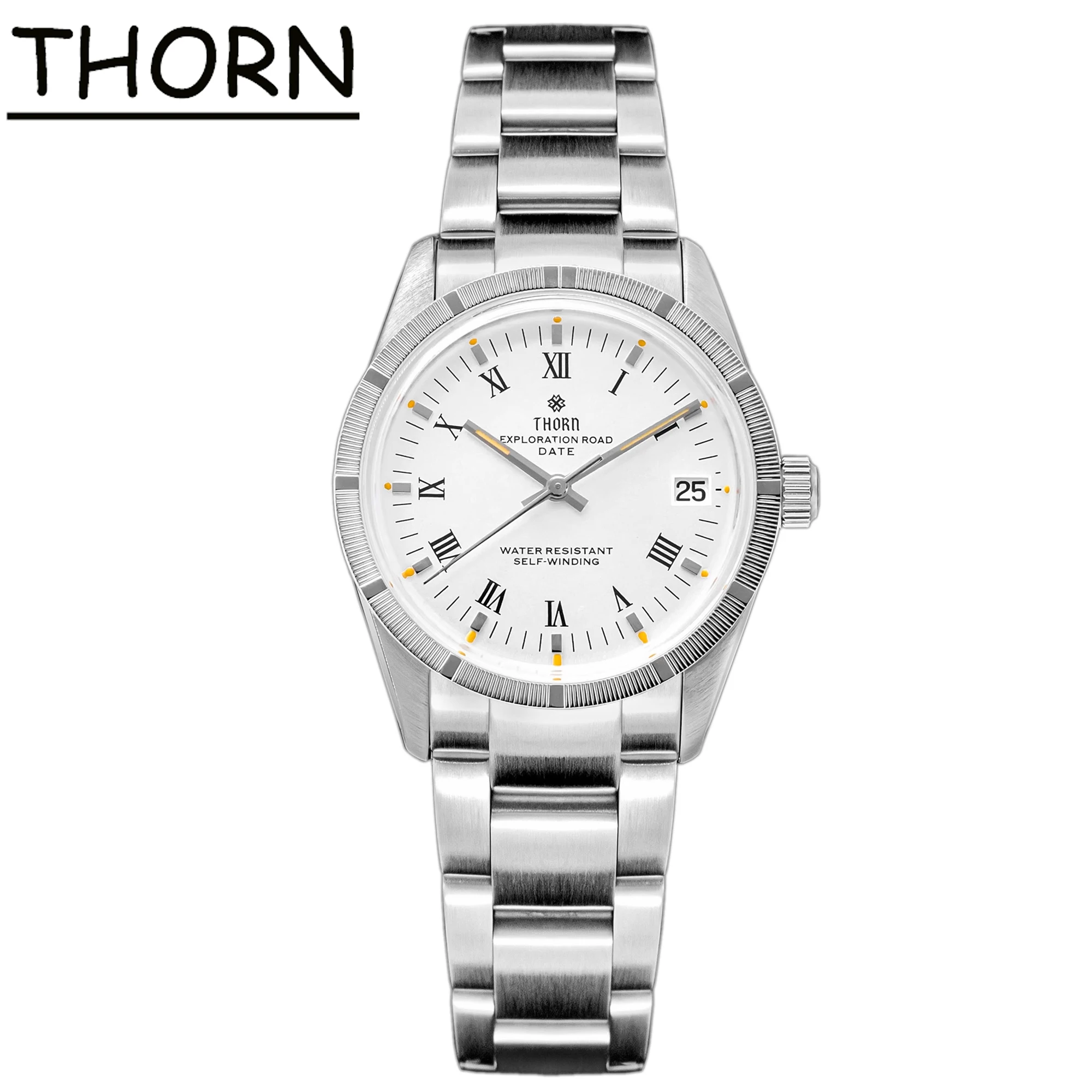
The field watch’s utility extends across numerous civilian applications. Outdoor enthusiasts appreciate their reliability in remote areas where charging isn’t available. First responders and emergency personnel value their durability during extended operations. Travelers rely on their functionality across time zones without requiring adaptation to local power systems.
Beyond practical considerations, many users find value in the deliberate limitation of features. In an era of constant connectivity and information overload, a simple timepiece that performs one function exceptionally well represents a refreshing alternative to multi-function devices competing for attention.
The rugged automatic watches philosophy emphasizes proven reliability over novelty—a perspective that resonates with many consumers seeking products built to last rather than planned for obsolescence. This long-term value proposition makes these watches particularly appealing as lifetime purchases or heirlooms.
For modern civilian users, the military field watch offers something increasingly rare: purposeful design that prioritizes reliability over features, durability over fashion, and function over form. Its continued relevance speaks to a growing appreciation for these timeless qualities in an increasingly disposable product landscape.
Can Technological Advancements Replace Traditional Field Watch Reliability?
The debate between advanced electronic timekeeping and traditional field watches centers on a fundamental question: does increased capability necessarily deliver better reliability? While modern smart devices offer unprecedented functionality, they introduce complexity and dependencies that traditional watches avoid entirely.
Electronic Timekeeping Advantages
- Multiple Functions: GPS navigation, health monitoring, communications
- Precision Timekeeping: Automatic synchronization with atomic time standards
- Programmable Alerts: Customizable notifications and reminders
- Data Recording: Activity tracking and performance metrics
- System Integration: Connection to broader communications networks
Traditional Watch Advantages
- Power Independence: Automatic movements function indefinitely without external power
- Electromagnetic Resilience: Immunity to EMP effects and electronic interference
- Environmental Tolerance: Broader operational temperature range
- Simplicity: Fewer potential failure points
- Field Serviceability: Basic repairs possible with limited tools
In military contexts, the principle of redundancy often leads to issuing both types of timepieces. Electronic devices deliver advanced capabilities under optimal conditions, while traditional watches provide fundamental timekeeping regardless of circumstances. The performance of automatic watches in military service demonstrates their continued value even alongside cutting-edge technology.
Specific scenarios highlight the enduring advantages of traditional timepieces. Extended field operations where power sources are unavailable, environments with extreme temperatures that affect battery performance, and situations where electromagnetic interference might compromise electronic devices all favor mechanical reliability. The simple act of telling time—the core function of any watch—remains achievable with a traditional field watch under virtually any condition.
This isn’t to suggest that traditional watches are superior to their electronic counterparts—merely that they excel in different areas. The ideal approach recognizes the complementary strengths of both technologies rather than viewing them as competitors. Just as a military force might employ both satellite communications and signal flares, the modern watch wearer can appreciate both the advanced capabilities of smart technology and the enduring reliability of traditional watchmaking.
What Makes a True Military Field Watch Different from Military-Inspired Fashion?
As military watch aesthetics have gained popularity, the market has filled with timepieces that adopt the look of field watches without incorporating their functional substance. Understanding the differences between authentic military-spec watches and fashion-oriented homages helps consumers make informed choices based on their actual needs.
True military field watches typically feature:
- Material Specifications: Cases, crystals, and movements that meet specific durability standards
- Tested Water Resistance: Not just claimed ratings but verified performance under pressure
- Shock Protection Systems: Internal components designed to withstand impacts
- Temperature Tolerance: Functionality across extreme temperature ranges
- Luminous Standards: Brightness requirements and duration specifications for visibility
Military-inspired fashion watches often focus on:
- Aesthetic Elements: Military color schemes and design motifs
- Visual Authenticity: Dials and hands that resemble historic models
- Heritage Marketing: Emphasis on brand history or military connections
- Affordable Approximation: Capturing the look without the technical specifications
- Comfortable Compromises: Modern sizing and stylistic adjustments for contemporary tastes
Neither approach is inherently superior—they simply serve different purposes. A weekend hiker doesn’t need a watch tested for parachute jumps, just as a fashion enthusiast may prioritize visual appeal over technical specifications. The key is understanding which qualities matter most for your specific needs.
When evaluating watches with military styling, consider what you’re truly seeking: the authentic functionality that comes from military specifications, or simply the classic aesthetic that these designs pioneered. Both have their place, but understanding the distinction helps set appropriate expectations for performance and longevity.
The enduring appeal of military watch design speaks to how successfully these timepieces balanced form and function. Even watches that adopt only the aesthetic elements are paying tribute to a design philosophy where purposeful engineering created lasting beauty—a principle worth celebrating regardless of technical specifications.

